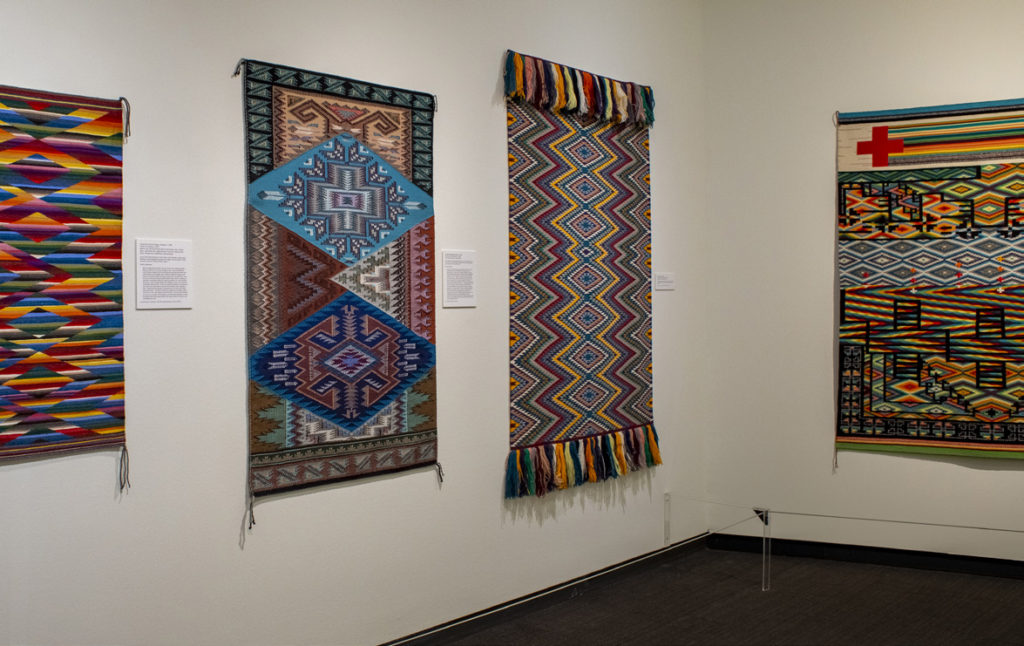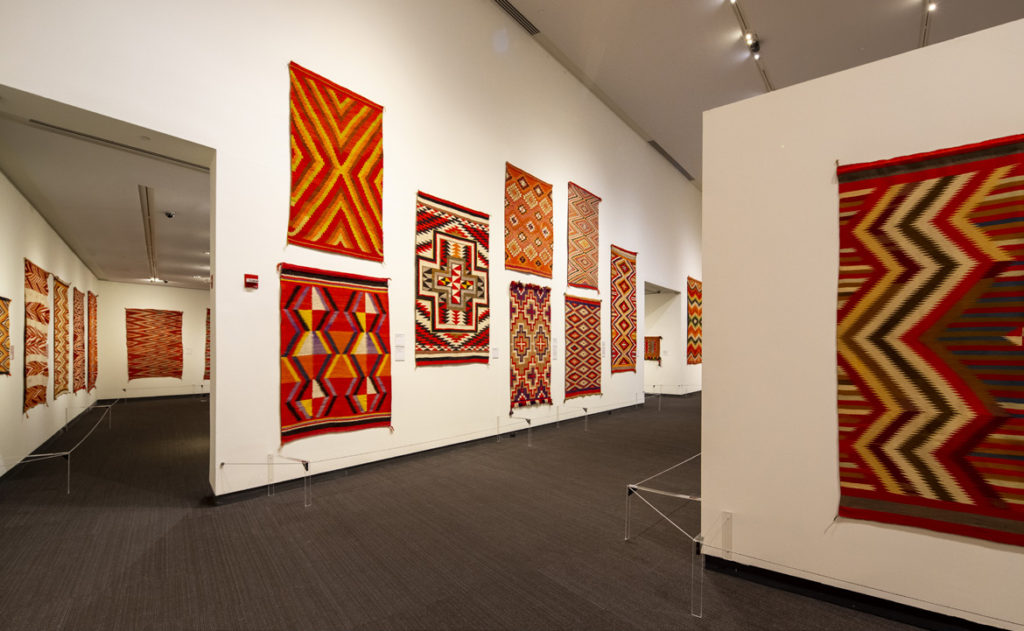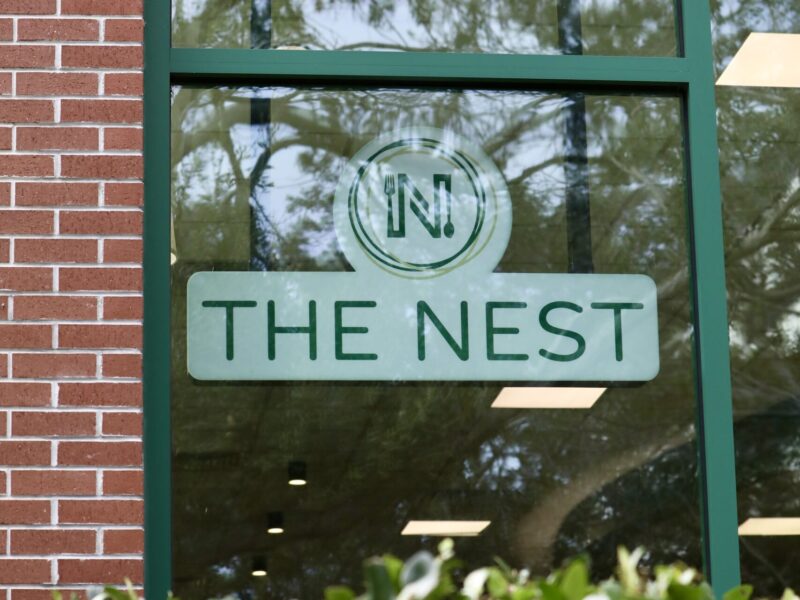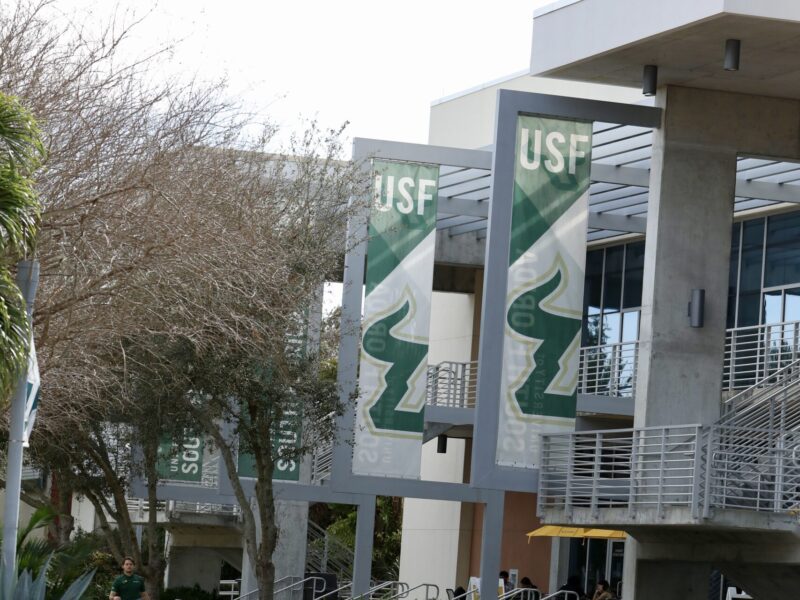Pictured Above: The Museum of Fine Art’s ‘Color Riot!’ displays over 80 striking Navajo textiles that span over a century of indigenous history. Velma Kee Craig’s “Bar/QR Code,” (above) was made in 2009 and displays the American flag made from a QR code and a barcode as a commentary on modern commercialization during the Great Recession.
Courtesy of MFA St. Petersburg
By Molly Ryan
Blending representation and education, the Museum of Fine Arts St. Petersburg (MFA) is hosting “Color Riot!”
The exhibit was originally developed at the Heard Museum in Phoenix, dedicated to preserving and collecting indigenous American art. All of Navajo descent, Velma Kee Craig, Natalie Miles and Ninabah Winton co-curated “Color Riot!” to display the boundaries both set and broken by Navajo weavers.
The installation features over 80 Navajo textiles and spans over a century of indigenous history — beginning with the “Transitional Period” (1860s to 1910s) and ending with contemporary works of the past decade.

Courtesy of MFA St. Petersburg
The period gets its name from the Navajo people’s transition back to their native land after being held at the Bosque Redondo internment camp.
“We saw this period, the ‘transitional period,’ as a very free time for the weavers because they had no constraints,” Miles said. “We really enjoyed the weavers’ unabashed use of color and experimentation.”
Craig called the weavings in the exhibit “testimonies to that time (of) sadness, confusion and even happiness to be out in the homelands again.”
The MFA opened “Color Riot!” on Dec. 19 and will host it until March 14.
“This exhibition celebrates the individualism and flair for experimentation in Navajo textiles from the last quarter of the 19th century,” according to the MFA St. Petersburg website. “No longer weaving for their traditional trade partners and working at a time when outside market influences were at a low point, the Navajo were free to experiment with form and color.”
The installation takes you through an array of striking colors and patterns; displaying square, diamond, banded, wedge weave and Hispanic textile designs.
According to Lashonda Curry, the manager of communications and public relations at the MFA, the multi-faceted textiles were used as “shoulder blankets, sleeping blankets, saddle blankets, saddle throws, pillow covers, and hung on the walls of homes just as they are in the exhibition.”
Starting with a basic introduction and characterization of the “Transitional Period,” “Color Riot!” ends the installation by assuring the viewers that Navajo weavers are “Still Rioting!”
Craig, weaver and co-curator of the installation, says that “experimentation is still going on… we put in the ‘Still Rioting’ section at the end of the exhibition to show how contemporary weavers are working in this Navajo weaving format. There’s just a real diversity in Navajo weaving, as there are in many different cultural arts.”
“Still Rioting!” features one of Craig’s original works, “Bar/QR Code,” made in 2009, displaying the American flag made from a QR code (the stars) and a barcode (the stripes) as a commentary on modern commercialization during the Great Recession.
More than just remarkable textiles and colors, “Color Riot!” serves to remind its viewers of the rich culture, history and current livelihood of the Navajo people.
“I really hope that people understand that even though a really dark period in history preceded this and some really dark times may have followed afterwards, this was a period that was very much about dynamism and moving forward,” Winton, another co-curator, said.
The MFA is open on Tuesday and Wednesday from 10 a.m. to 5 p.m., on Thursday and Friday from noon to 8 p.m., on Saturday from 10 a.m. to 5 p.m. and on Sunday from noon to 5 p.m. Student tickets are $15 with a valid school ID. Advanced tickets are required. Purchase them online at the MFA website.

Courtesy of MFA St. Petersburg



